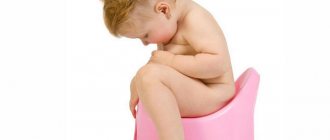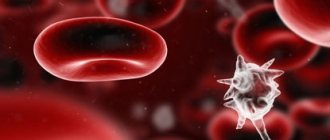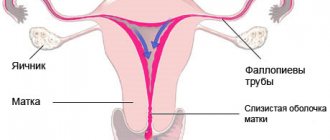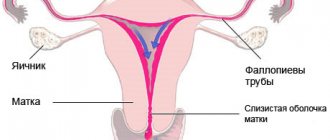January 20, 2012
Puberty is a period of active growth and development of the entire adolescent body. What physical changes occur during this time?
Puberty usually begins during adolescence. During this period, the child's body will go through a series of biological changes: rapid growth, weight gain, development of genital organs, growth of body hair. These changes mean that yesterday's child is gradually turning into an adult.
Age of puberty, when does puberty begin, at what age does it start?
Puberty occurs between the ages of 12 and 16 years. Sarklinik believes that the timing of puberty in certain groups and in individual boys and girls, boys, young men and girls varies significantly. What are the signs of puberty in boys ? Boys develop a mustache, a beard, an enlarged Adam's apple (Adam's apple), an enlarged penis and testicles, hair in the armpit and pubic area, and a rougher voice. What are the signs of puberty in girls ? In girls, the mammary glands enlarge (mammary glands, breasts, boobs become fuller, rounder, larger), the shape of the pelvis (pelvic bones) changes, the external genitalia increase (labia majora and minora, clitoris), the skin of the labia darkens, hair appears under the armpits and on the pubis, pubic hair grows in a triangle, there is a sharp jump in growth.
What do androgens affect?
GnRH, in turn, through two other hormones, stimulates spermatogenesis - the process of sperm formation, and the formation of androgens - male sex hormones.
Under the influence of androgens, the boy’s muscles become more massive, and the protein content in his bones increases. All this ultimately causes an increase in body size. This process does not occur gradually, but in leaps and bounds. Maximum growth in boys occurs between 12 and 15.5 years and can reach 10 cm or more per year. After 18 years, a young man can still grow by about 3 cm. At a certain point, a high level of androgens causes ossification of the growth zones of long bones, and their further lengthening stops.
Does everyone grow the same?
It should be understood that each person develops individually, and two different teenagers may reach the same height at different ages.
Puberty of girls, girls, sex formula, female puberty
What is the age of puberty for girls ? Puberty in girls most often occurs between the ages of 12 and 16 years. When assessing the puberty of girls, the following are taken into account: P – pubic hair growth, pubic area; Ax – armpit hair growth; Ma – mammary glands, Me – menstruation (menstruation). At different ages, the sex formula changes.
The sexual formula P0 Ax0 Ma1 is observed between the ages of 8.6 and 12.0 years.
The sexual formula P1 Ax0-1 Ma1 is observed between the ages of 9.8 and 13.4 years.
The sexual formula P2 Ax2 Ma2 is observed between the ages of 10.2 and 13.5 years.
The sexual formula P3 Ax2-3 Ma3 is observed between the ages of 11.0 and 14.3 years.
The sex formula P2 Ax3-4 Ma3 Me+ is observed between the ages of 11.1 and 14.4 years.
The sex formula P2 Ax2 Ma3-4 Me+ is observed between the ages of 12.0 and 15.5 years.
The sex formula P3Ax2Ma3-4Me+ is observed between the ages of 12.8 and 15.7 years.
The sex formula P3 Ax3 Ma3-4 Me+ is observed between the ages of 13.5 and 16.9 years.
0 is the absence of a trait, 3 - 4 is maximum sexual maturity. During puberty, girls begin to develop mature eggs. There is a change in behavior and psyche and attraction to guys.
Cycle of female sexual development
Unlike representatives of the stronger sex, girls already at birth have a limited supply of eggs in their ovaries. These germ cells will ensure the reproductive function of a woman during her life.
Thus, the entire cycle of puberty is aimed at rational use of the ovulatory reserve. Like men, a woman's sexual development is divided into several stages.
Stage 1 Puberty and puberty
The period of puberty for girls begins somewhat earlier than for representatives of the stronger sex - already at the age of 8-9 years, the first changes begin to occur in the body. By the age of 13-14 years, the girl’s reproductive system is almost completely formed. However, age limits are individual.
Puberty of a girl is usually divided into two stages:
- Presexual stage of development (9-12 years)
- at this stage the girl enters a phase of rapid growth. Her body is actively changing, primary and secondary genital organs are developing, and the first vaginal discharge is observed. - Puberty stage (13
-
16 years )
- the onset of this period of sexual development is indicated by the first menstruation - menarche. At this stage, the girl’s active growth slows down and the ovulatory cycle begins to occur in her body every month.
Hormonal surge during maturation
At the endocrine level, puberty can be considered a veritable “hormonal explosion.” At approximately the age of 8-9 years, the hypothalamus begins to produce one of the main hormones of puberty - gonadotropin.
This hormonal substance has a stimulating effect on the pituitary gland, which in response synthesizes follicle-stimulating hormone (FSH). It is under the influence of FSH that the active work of the ovaries starts.
The ovaries are a paired endocrine organ that plays a critical role in the formation of a woman’s reproductive function. Activation of the ovaries is manifested by the production of female sex hormones - estrogens. It is the effect of these hormonal factors on the girl’s body that is accompanied by the physical changes that occur in the body during puberty.
An increase in the level of estrogen in the blood becomes a signal for the pituitary gland to produce another important female hormone - luteinizing hormone (LH). It is this endocrine substance that stimulates the process of the release of an egg from the follicle, which doctors call ovulation.
Puberty in girls
When the chain of hormonal reactions described above occurs in a girl’s body for the first time, we can talk about her entering puberty. The egg released from the ruptured follicle begins its journey through the fallopian tubes to the uterine cavity. The remains of the ruptured follicle turn into the corpus luteum. This name is associated with the accumulation of colored substances.
The corpus luteum is a temporary organ that provokes the production of estrogen in the ovaries. The corpus luteum also stimulates the synthesis of another important female hormone - progesterone. This hormonal factor is responsible for preparing the inner layer of the uterus (endometrium) for implantation of the zygote in the event of fertilization of the egg.
If pregnancy does not occur, progesterone and estrogen levels decrease and the process of menarche (first menstruation) begins. This process is manifested by the rejection of the inner layer of the uterus and its removal from the body in the form of bloody discharge from the vagina. Along with the remnants of the exfoliated endometrium, particles of the mucous membrane and the unfertilized egg itself are removed from the girl’s body.
Signs of puberty: when a girl turns into a girl
The hormonal changes that occur in a girl’s body during puberty affect her physical development. Signs of puberty appear as follows:
- Active growth
. Even before the onset of the first menstruation, you can notice the approach of puberty by a sharp growth spurt. Due to rapid growth, a girl’s body often takes on a somewhat “awkward” character, which is observed in most adolescents during puberty. - Development of the mammary glands
. Against the background of hormonal changes, the girl’s mammary gland begins to form. This process begins with an increase in the size of the nipples and halos. Then the gland itself increases in size, acquiring feminine shapes. By about 15-16 years, the process of formation of the mammary glands is almost complete. In this case, the final shape and size of a woman’s breasts are determined only after the birth of a child and the end of the lactation period. - Oily skin and acne.
As in boys, the action of hormones in a girl’s body activates the sebaceous and sweat glands. Doctors believe that this is necessary to naturally moisturize the skin, which stretches greatly with the rapid growth of the child. As a result, teenagers' skin is often prone to excess oiliness, which leads to acne on the face, neck and back. - Female pattern hair growth.
Hair growth in girls begins in the labia area and within 6-12 months spreads to the entire pubic area. Hair also begins to appear in the armpit area. - Shaping a feminine figure.
Unlike boys, who begin to actively grow muscle mass during this period, a girl’s body is formed according to the female type with a predominance of adipose tissue. The pelvic bones grow in width, causing the hips to increase in volume. In this case, fatty tissue is deposited in the area of the buttocks, thighs, mammary glands, pubis and shoulder area. - The appearance of menstruation.
The onset of the first menstruation becomes the most striking sign of puberty, when a girl acquires the ability to bear children.
Features of puberty in girls
Puberty is considered difficult not only from the point of view of physiological changes, but also from the psycho-emotional state of the girl.
Sharp hormonal fluctuations, body transformation and new unfamiliar processes in the body often cause changes in the behavior and mood of a teenager. Girls begin to show sexual interest in the opposite sex and are prone to complexes and lack of self-confidence. Sometimes these emotions manifest themselves as aggressive reactions.
The end of puberty is determined individually for each girl, but most often at the age of 15-16 years a woman has a mature reproductive system and is capable of conceiving, bearing and giving birth to a child. At the same time, physiological maturity has nothing to do with psychological maturity, which usually occurs somewhat later.
If signs of puberty appeared before 9 years of age or do not appear until 13-14 years of age, parents should contact a specialist who will conduct a comprehensive study of the girl’s hormonal background.
Stage 2 Puberty
The stage of puberty begins from the end of puberty and lasts until the onset of menopause. This period is optimal for the implementation of the function of childbearing. A mature woman has a regular menstrual cycle. Every month, her body alternates between the processes of egg maturation, ovulation and menstruation. This entire cycle is regulated by the same hormones that are involved in the process of puberty - FSH, estrogens, LH, prolactin.
If menstruation is absent or delayed, there is reason to suspect pregnancy or pathology. In this regard, a woman should closely monitor the menstrual cycle, which is considered the main indicator of women's health. This is necessary both for those planning a pregnancy and for women seeking effective contraception.
During puberty, a woman should regularly (at least once every six months) consult a gynecologist. During the appointment, the doctor assesses the condition of the genital organs, conducts microflora studies and excludes the presence of infections, the risk of which is greatest in women at the stage of puberty.
Stage 3 Climax
With age, a woman experiences a decline in sexual and reproductive functions. This period is called menopause or is designated by the general term menopause. The menopause consists of three main stages - perimenopause, menopause and postmenopause.
Menopause is the moment when a woman has her last menstrual period. The average age of menopause is 51 years.
Menopausal changes in a woman’s body begin with the extinction of the activity of the hypothalamus and pituitary gland. A decrease in the synthesis of hormones from these glands leads to the fading of the functions of the ovaries, which cease to produce a sufficient amount of estrogens. This leads to characteristic menopausal changes in a woman’s body.
First of all, the level of gestagen hormones, which are responsible for menstrual function, decreases. Ovulation occurs less frequently and the likelihood of conception is significantly reduced. At the same time, the nature of menstruation also changes - 60% of women note more scanty and infrequent menstruation, while 35%, on the contrary, experience heavy bleeding during menstruation.
Only 5% of women do not describe changes in the nature of the menstrual cycle before menopause.
Unpleasant symptoms of menopause
Other symptoms of menopause include the following:
- Hot flashes
- a woman regularly experiences sudden attacks of heat and redness of the skin of the face, neck, chest and arms. The tide usually lasts from 2 to 5 minutes, causing significant discomfort to the fair sex. - Heart problems
– against the background of hormonal changes, women notice palpitations, heart rhythm disturbances and frequent changes in blood pressure. - Decreased libido
– a woman’s libido usually decreases due to changes in hormonal levels. In addition, sexual intercourse may cause discomfort to the patient due to excessive dryness of the mucous membranes of the genital organs. - Changes in psycho-emotional state -
the period of menopause for a woman is accompanied by insomnia, anxiety, sudden mood swings, irritability and general weakness. - Physical discomfort -
many postmenopausal women report itching and burning in the genital area, pain and urination problems. Also, women often face the problem of gaining weight due to the predominance of male sex hormones over estrogens, the level of which decreases.
Menopause is a difficult test for a woman, both in terms of body reactions and in the field of mental changes. During this period, it is especially important to seek help from specialists who, based on studying hormonal levels, will help you survive menopause simply and comfortably.
Stages of puberty, stages
What are the stages of puberty ? Experts distinguish 5 stages of puberty: stage 1, stage 2, stage 3, stage 4, stage 5. Stage 1 – childhood, prepubertal period. Stage 2 – the beginning of adolescence, the beginning of puberty. Stage 3 - the beginning of adolescence, the first period of puberty, stage 4 - continuation of adolescence, the second period of puberty, stage 5 - the onset of sexual biological maturity, the end of the puberty period.
Gynecologist and first menstruation
During the first two years, periods may be irregular, but they stabilize gradually. However, it is at this time that the girl should visit the gynecologist for the first time. And this experience should be positive, so that in the future she will not be afraid to visit him when necessary.
A gynecologist should be chosen with special care. It is better to introduce your child to a doctor and ask him to explain that the child will not expect anything painful during the first procedure (and further), only an ultrasound examination of the degree of maturity of the follicles. It is required to determine when to expect your period. Sometimes in adolescence they may not come for six months, and this is completely normal. Or, on the contrary, the follicles are already forming quite normally, as in adults.
Another important point is measuring the thickness of the endometrium. This is done to check for breakthrough bleeding. This happens when the mucous membrane is not rejected in time. There are a lot of nuances here.
Last but not least is the cervical cancer vaccination. Girls do it from the age of 11, and it’s just a miracle! It is not without reason that its creator was awarded the Nobel Prize for the discovery of the drug. Some parents even vaccinate boys against this disease. This is done to completely eradicate the disease, as once happened with the plague.
What is early, premature puberty?
Early puberty , or precocious puberty, is associated with the appearance of secondary sexual characteristics in girls before age 8 and in boys before age 10. Puberty is characterized by hormonal changes and increased function of the gonads. Puberty completes the formation of secondary sexual characteristics, menstruation (menstruation, menstruation) appears in girls, and wet dreams (involuntary ejaculation) appear in boys. There is also a rapid increase in body length and weight (height in cm and weight in kg) and subcutaneous fat layer increase, especially in girls. By the end of the maturation period, short stature or excessively high growth are clearly defined. During puberty, acceleration processes become more obvious.
Difficulties for parents of teenagers
Raising a child during adolescence is a huge job. During this period, it is important not to ruin the relationship with your child, because this is very easy to do during puberty. The main reason for this is the desire to return an understandable and familiar baby, with whom it was pleasant and simple. But this will not work - time moves forward, and this is wonderful, accept it. Secondly, the teenager needs to be told how and what is done correctly. But this should be done extremely carefully. A teenager is constantly in a state of stress, so instructing him is another task.
Transitional age vs. pregnancy: which is more difficult
Definitely puberty. There is simply no more difficult period for the body: no pregnancy or menopause is even close. During puberty, a global restructuring of the hormonal system occurs, which affects all organs.
The fact is that during pregnancy, an already formed body experiences hormonal stress, and during adolescence, a hormonal storm is combined with active growth. Hence the difficulties.
Teen health
Imagining yourself as a teenager is simple and difficult at the same time. Imagine that you wake up every day and something new and not particularly pleasant happens in your body. For example, your head hurts, or strange hair grows in unusual places, your heart aches, your stomach is twisting, your stool is unstable, sleep either doesn’t come or doesn’t want to end... and concentrating on something also becomes an impossible task! Understand that puberty is hard, to get through it, you really need to put in the work and show miracles of patience. But this cannot be done without the help of doctors.
Find an experienced doctor who can determine which things need adjustment and which are completely natural. A good example is that a teenager has pain in his knee. This means that he should limit sports for now. Or another one: the child is not growing. Here you need to find out whether it is a matter of normal late puberty or whether the hormonal levels require adjustment.
Do not forget to regularly undergo basic examinations: blood tests, determination of the hormone TSH (it regulates the functioning of the thyroid gland). A teenager definitely needs the second one, because during the period of active restructuring of the body, the thyroid gland takes a strong blow. It is during puberty that problems with it appear if there is a genetic predisposition.
Checklist of mandatory tests for a teenager:
- general blood analysis;
- TSH;
- Vitamin D test: 25-OH D 3.
Puberty disorders
The increasing motor and neuropsychic activity of adolescents leads to increased tension in the metabolism, endocrine system, and nervous system. The processes of general excitation intensify, the stabilization of conditioned reflexes becomes more difficult, the blood supply to the brain somewhat deteriorates, and therefore fatigue and phase states develop more easily. Disorders of the nervous system, psychoneuroses, neurasthenia, depression, obsessive neurosis, and vegetative-vascular dystonia are often observed. The lability of the function of the autonomic nervous system increases, frequent stabbing pains in the heart area, palpitations, and cardioneurosis. Psychopathic manifestations are possible. Pediatricians, therapists, endocrinologists, reflexologists, and reflexologists often call the period of puberty transitional, since at the beginning of it children have not yet become adults, but they no longer feel like children. This period is especially difficult psychologically. The psyche of a teenager is very vulnerable. To prevent pathological deviations in the mental and physical development of a teenager, preventive visits to a psychologist are important. Disorders of puberty may be observed (lag, delay, slowdown, early, premature development).
Sex life of teenagers
Often boys and girls, boys and girls, teenagers are interested in such issues as puberty, sex life, wet dreams, genitals, labia majora, labia minora, genitals, erection, penis, vagina, clitoris, virgin hymen, sexual maturity, sexual intercourse. Teenagers are also interested in the following questions. What is the male reproductive organ? Which gender is more interesting? What is nudism? Who are naturists, nudist girls, puberty name? How long does the process of puberty last? What is the norm of sexual development, standards? Why does late puberty and impotence occur in children? What are the dangers of frigidity, prostatitis, early ejaculation, vaginismus? How to achieve orgasm for a girl? Why isn't the dick worth it? Why is my penis crooked? How to prolong sex? Why is the vagina dry? Why is the clitoris swollen after sex? Why is the vagina narrow? What should you do if it drips from your penis and burns in your vagina?
Dear teenagers, if you have any of the above questions, you can consult a doctor on the topics that interest you absolutely free on the sarclinic website and get up-to-date answers. The site and the doctor are waiting for your questions.
Sources
- Izawa M., Hisamatsu E., Yoshino K., Yoshida M., Sato T., Narumi S., Hasegawa T., Hamajima T. Complete androgen insensitivity syndrome with accelerated onset of puberty due to a Sertoli cell tumor. // Clin Pediatr Endocrinol - 2021 - Vol30 - N2 - p.99-104; PMID:33867670
- Selvaraj A., Prasad HK., Narayanasamy K., Thiagarajan A., Krishnamoorthy N. Clinical Profile of Adolescents With Delayed Puberty. // Indian Pediatr - 2021 - Vol - NNULL - p.; PMID:33864448
- Ivell R., Anand-Ivell R. The Physiology of Reproduction - Quo vadis? // Front Physiol - 2021 - Vol12 - NNULL - p.650550; PMID:33859571
- Torres PJ., Luque EM., Di Giorgio NP., Ramírez ND., Ponzio MF., Cantarelli V., Carlini VP., Lux-Lantos V., Martini AC. Fetal Programming Effects of a Mild Food Restriction During Pregnancy in Mice: How Does It Compare to Intragestational Ghrelin Administration? // Reprod Sci - 2021 - Vol - NNULL - p.; PMID:33856666
- Štichhauer R., Šafus A., Neumann D., Novák I., Skutilová V., Laco J. Ovotesticular Disorder of Sexual Development and Non-Palpable Testis. // Acta Medica (Hradec Kralove) - 2021 - Vol64 - N1 - p.42-45; PMID:33855958
- Deardorff J., Reeves JW., Hyland C., Tilles S., Rauch S., Kogut K., Greenspan LC., Shirtcliff E., Lustig RH., Eskenazi B., Harley K. Childhood Overweight and Obesity and Pubertal Onset Among Mexican American Boys and Girls in the CHAMACOS Longitudinal Study. // Am J Epidemiol - 2021 - Vol - NNULL - p.; PMID:33831178
- Singh P., Samaddar S., Parakh N., Chandra J., Seth A. Pubertal Development and its Determinants in Adolescents With Transfusion-Dependent Thalassemia. // Indian Pediatr - 2021 - Vol - NNULL - p.; PMID:33772533
- Gulseth E., Urdal A., Andersen MH., Diseth T., Aksnes G., Emblem R., Wæhre A. High satisfaction on genital self-perception and sexual function in healthy Norwegian male adolescents. // J Pediatr Urol - 2021 - Vol - NNULL - p.; PMID:33750647
- Nassau DE., Best JC., Cohen J., Gonzalez DC., Alam A., Ramasamy R. Androgenization in Klinefelter syndrome: Clinical spectrum from infancy through young adulthood. // J Pediatr Urol - 2021 - Vol - NNULL - p.; PMID:33726973
- Wang J., Zhan S., Yuan J., Ullah R., Dong G., Wu W., Huang K., Fu J. The incidence of brain lesions in central precocious puberty: The main cause for Chinese boys was idiopathic. // Clin Endocrinol (Oxf) - 2021 - Vol - NNULL - p.; PMID:33721341
Puberty: treatment, how to treat puberty disorders
Sarklinik provides treatment for disorders of puberty in Saratov , treatment of disorders of puberty in Russia, treatment of retardation, treatment of delayed puberty, treatment of premature puberty, treatment of early puberty, treatment of sexual dysfunction, treatment of late delayed puberty in boys and girls, guys and girls, children and teenagers. At the first consultation, the doctor will tell you how to treat puberty disorders and how to cure delayed puberty.
There are contraindications. Specialist consultation is required. Make an appointment and consultation.
Text: ® SARCLINIC | Sarclinic.com \ Sarlinic.ru Photo: (©) Zastavkin | Dreamstime.com \ Dreamstock.ru The guy and girl shown in the photo are models, do not suffer from the diseases described and/or all coincidences are excluded.
Related posts:
Why does a child stand on tiptoes, toes, poorly on his legs, not worth it: what to do, how to treat, stand
Neurosonography of the brain of newborns: norms, interpretation, center, where to do it
Sarclinic: treatment of children in Saratov
Fecal incontinence: treatment in Saratov, how to cure fecal incontinence in children in Russia
The child stutters, began to stutter, began to stutter, what to do








